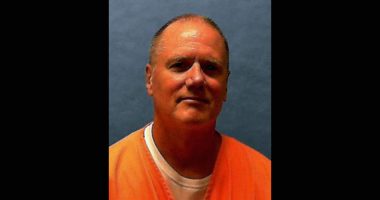
Flagler County government is worried about renewed wars over annexation, like the so-called water wars that cascaded from the Hammock to Flagler Beach two decades ago as Palm Coast weaponized its utility services as a means to devour neighboring communities. As Flagler County and the cities continue to grow, new conflicts and surprises are arising along county and city borders, prompting measures to prevent more wars.
County government is proposing to create a Joint Planning Committee with Palm Coast, Flagler Beach and Bunnell to review all developments and annexations that straddle county-city or city-city boundaries. The committee would be responsible for drafting service agreements defining who will provide law enforcement, fire, water and sewer services and road maintenance.
The County Commission is all for it. Getting the cities to sign on to what amounts to more transparent coordination may be a challenge.
“We’re at a stage where annex annexations have kind of run wild, and I don’t mean that in a disparaging way,” County Attorney Al Hadeed said. “Their pace, their size, their impact, are growing, not diminishing, and perhaps we need to wrap our arms around it and figure out how it can occur in a more accountable way and in a way that best represents the interests of Flagler County citizens and eventually, municipal citizens.”
Hadeed and Assistant County Attorney Sean Moylan unveiled the joint committee proposal to the County Commission at a workshop last week. They did so prompted in part by two major developments looming, one of them pending an annexation: the planned 8,000-home Reserve at Haw Creek in Bunnell, and the 2,400-home Veranda Bay development, already under way, along John Anderson Highway on the outskirts of Flagler Beach.
Veranda Bay was within inches of annexing into Flagler Beach when opponents of the annexation threatened to sue, citing a state law forbidding “enclaves” resulting from annexation. One such enclave of less than a dozen county properties would be created if Flagler Beach annexed the entirety of Veranda Bay’s lands. The threat put the annexation on hold–and took the county by surprise. That’s the sort of issues the Joint Planning Committee would seek to address before it’s a problem.
But the committee would not have any power to prevent annexations. It would not have any powers per se–unless there was jurisdiction to trigger the more formal Florida Government Conflict Resolution Act, which implies that litigation is in process. The committee would be a pre-emptive conflict-resolution tool before getting to that stage, with a focus on all governments’ adherence to state law–which has not often been respected in local annexations.
The committee proposal is a tenet of the county’s new comprehensive plan. The joint committee would mirror an existing working group that does similar work where local governments intersect with school development impact fees (the one-time fee builders and developers pay to defray the impact of new residential construction on schools). A working group works at the staff level out whatever issues arise and bumps them up to a joint committee of elected officials, who ratify the working group’s findings. After some initial hiccups, the process has worked as intended.
The Joint Planning Committee would extend the method to annexation and broader development issues.
“Everyone recognizes that this is something that’s needed, it’s the right time,” Moylan said. Instead of the improvisational approach in place now, “we would have something that’s already established in place, has some basic rules of how information will flow and how comments can be transmitted between the jurisdictions. The hope there is that we have more coordinated planning going forward.”
It’s not clear who Moylan means by “everyone.” No one on the current Palm Coast, Bunnell or Flagler Beach councils and commissions has ever raised the possibility or wished for a joint committee, or even mused about any kind of joint panel to discuss annexations. The approach is clearly appealing to county commissioners, however, even though its reach remains hazy.
Moylan cautioned: it’ll be laborious, and if county and cities run into conflicts that the joint committee can’t resolve, that’ll kick off the more formal–and more laborious–intergovernmental dispute resolution process. That means joint meetings between governments. It means a possibility of litigation. Flagler County went through that last year with Ormond Beach, when Ormond sued Flagler over a road’s jurisdiction in Hunters Ridge. The matter was resolved, but not before intense exchanges and one duel of a meeting between the two governments.
The idea is to bring accountability to the process while minimizing chances of litigation. Even if an issue goes to court, “it is very difficult to predict how courts would treat any given annexation,” Moylan said. “The courts, I will say, are not always following the statute to the black and white letter. Rather, they apply a qualitative analysis. Given the whole context, it is difficult to glean precedent and rules. It’s a little bit all over the place.”
“So much for statute,” Commission Chair Andy Dance said. County Commissioner Leann Pennington wanted to ensure that the process was vetted by the legal department without shortcuts through the administrator.
Flagler County and its cities have been through annexation conflicts before. Hadeed summed up the water-war years two decades ago when Palm Coast, the county and Flagler Beach agreed to stop battling over annexation as Palm Coast forced areas to annex the moment they hooked into Palm Coast water and sewer. The conflict crested when Palm Coast was attempting what Hadeed described as a “backdoor” annexation of the Hammock. A legal settlement carved out areas protected from annexation, among them the Hammock, even if they were (or are) getting water from Palm Coast. Palm Coast Plantation is another, though that subdivision preserved its autonomy at the price of expensive litigation.
“An outgrowth of the competition between Palm Coast and rural landowners who feared Palm Coast, incorporating them, driving up their costs, drumming down their entitlements, etc,” Hadeed said, was pre-emptive annexation, the way Bunnell went on an annexation splurge two decades ago. That splurge was questionable, because it was grabbing thousands of acres of empty land.
“When a municipality expands, it’s not supposed to just grab silviculture lands,” Moylan said. “You’re not supposed to just make a tree farm into your city. It’s supposed to be an area that meets objectively measurable criteria in terms of how densely it already developed, with one exemption: you could have an area further away from the city that’s already urbanized and a gap in the middle that is not, and the statute gives grace there and says, yes, you can grab that because it’s in between your city and an urbanized area. But that criteria is one that we really need to take a closer look at, because it’s been abused thus far.”









